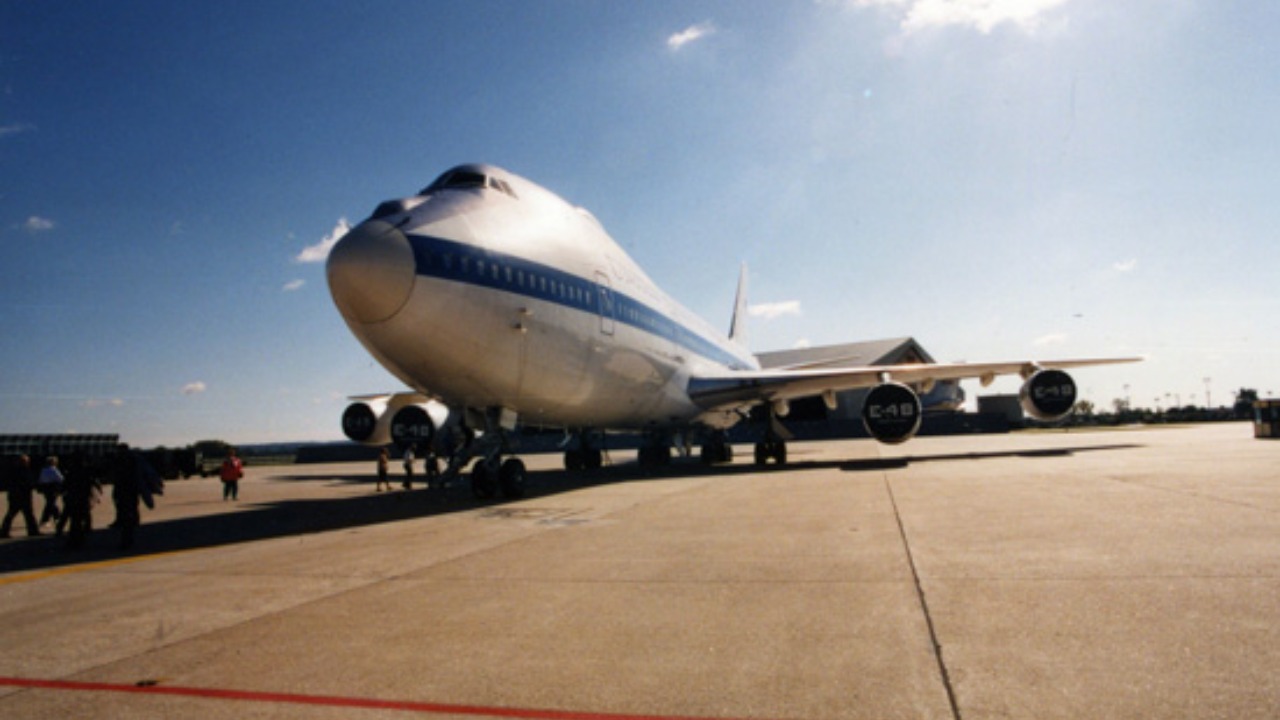
The Boeing E-4B Nightwatch, colloquially known as the Doomsday Plane, is a key component of the United States’ airborne command center, designed to respond to global crises. Recently, this mysterious aircraft was spotted flying over Washington D.C., and was also observed departing from Louisiana, highlighting its crucial role in national security operations amidst heightened tensions.
What Is the E-4B Doomsday Plane?
The E-4B Nightwatch, often referred to as the President’s Doomsday Plane, is a modified Boeing 747 that serves as the airborne U.S. operations center during emergencies. Its primary function is to provide a survivable platform for national leadership in the event of nuclear or conventional crises. The aircraft is equipped with advanced capabilities for global communications and coordination, ensuring that the U.S. leadership remains connected and operational under any circumstances.
Designed to withstand the effects of a nuclear detonation, the E-4B is a testament to the strategic foresight of the U.S. military. Its overall purpose and design make it a crucial asset in the U.S. airborne command center, as detailed in these comprehensive guides and reports.
Design Features Enabling Prolonged Flight
The E-4B’s airframe has been modified with a reinforced structure and multiple redundant systems to support extended airborne operations without the need for landing. Onboard power generation and environmental controls ensure that the crew and equipment can function indefinitely during missions. These features, coupled with the aircraft’s internal layouts and crisis-ready capabilities, make the E-4B a formidable airborne command center.
From its hardened shell to its advanced communication systems, every aspect of the E-4B is designed with the goal of ensuring operational continuity during a crisis. A closer look at the aircraft’s internal layouts and features reveals the meticulous planning and engineering that went into its creation.
Aerial Refueling Capabilities
One of the key features that enable the E-4B to stay airborne for extended periods is its compatibility with KC-135 and KC-10 tankers for in-flight refueling. This capability allows the aircraft to extend its mission duration far beyond the limits of standard aircraft. The E-4B’s refueling probes and fuel management systems are designed to facilitate this process, enabling the plane to remain aloft for days or even weeks with periodic refueling.
The ability to stay airborne for extended periods is a critical requirement for the E-4B, given its role in sustained U.S. operations. This report provides further insights into the operational necessities of the Doomsday Plane.
Historical Endurance and Mission Durations
In the past, the E-4B has demonstrated its endurance by staying airborne for over 12 hours continuously. However, with periodic refueling, the aircraft has the potential to remain in the air for much longer. There are records of the E-4B conducting multi-day operations during exercises or real-world alerts, which is a testament to its design for non-stop global response.
The development of the Boeing E-4B Nightwatch was driven by the need for a platform that could provide prolonged presidential command during crises. This article provides more information on the historical endurance and mission durations of the E-4B.
Recent Deployments and Sightings
The E-4B’s recent deployments provide valuable insights into its operational capabilities. For instance, the aircraft’s flight out of Louisiana on June 20, 2025, is a key example of its rapid deployment capabilities. The E-4B can be quickly deployed from Offutt Air Force Base or similar sites in response to emerging threats.
Another notable event was the sighting of the E-4B in Washington D.C. on June 21, 2025. This incident illustrates the aircraft’s role in domestic monitoring and response scenarios. These reports provide more details on these events and the mysterious profile of the aircraft.
Limitations and Maintenance Factors
Despite its advanced capabilities, the E-4B does have certain limitations. One of the key challenges is crew rotation. The aircraft has onboard facilities for up to 112 personnel, allowing for shifts to maintain alertness over long durations. However, maintaining a fresh and alert crew over extended periods can be a logistical challenge.
Another factor that can limit the E-4B’s airborne time is fuel efficiency. The aircraft’s maximum airborne time is typically limited by logistics rather than design. This article provides more insights into the operational constraints of the E-4B during global crises.
Future of the E-4B’s Airborne Role
Looking ahead, the E-4B is set to receive upgrades that will enhance its endurance capabilities. These include advanced avionics for better fuel management and extended missions. Additionally, there are plans to transition towards successors like the E-4B replacement program to sustain indefinite airborne command capabilities.
The E-4B continues to be a crucial asset in the U.S. airborne command center, and its ongoing relevance is highlighted in this recent analysis. As global tensions rise, the E-4B’s role as a survivable platform for national leadership is more important than ever.
More from MorningOverview